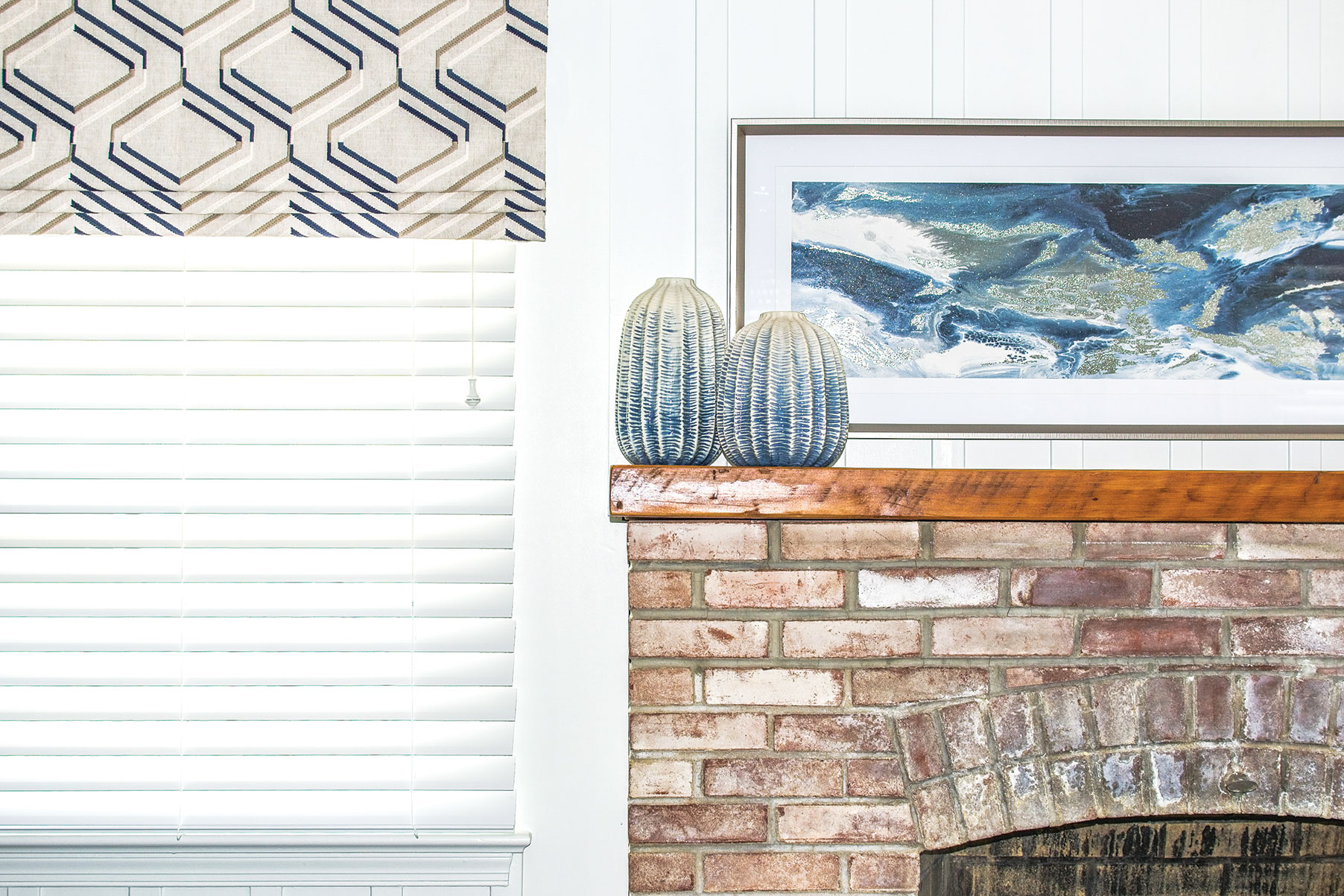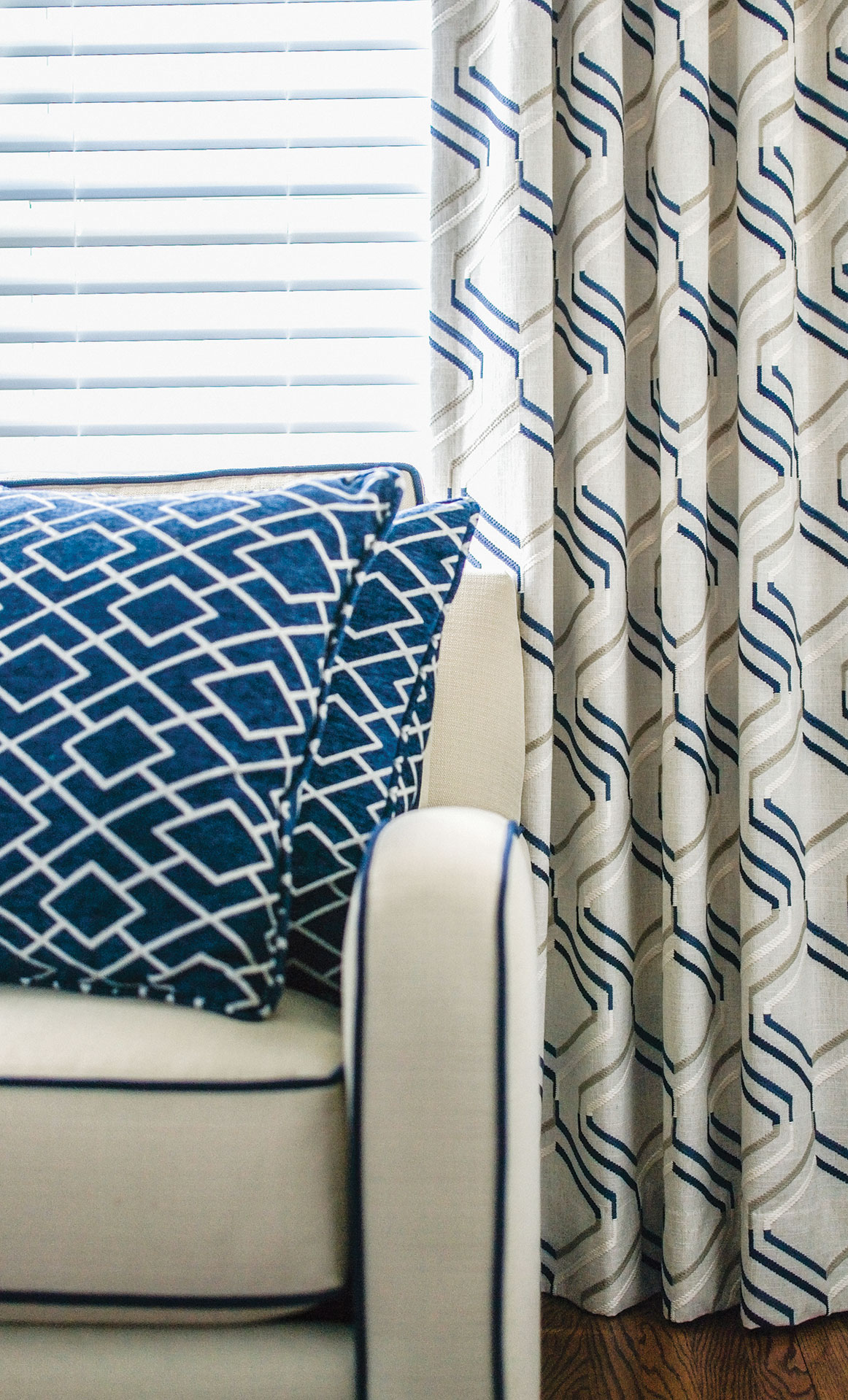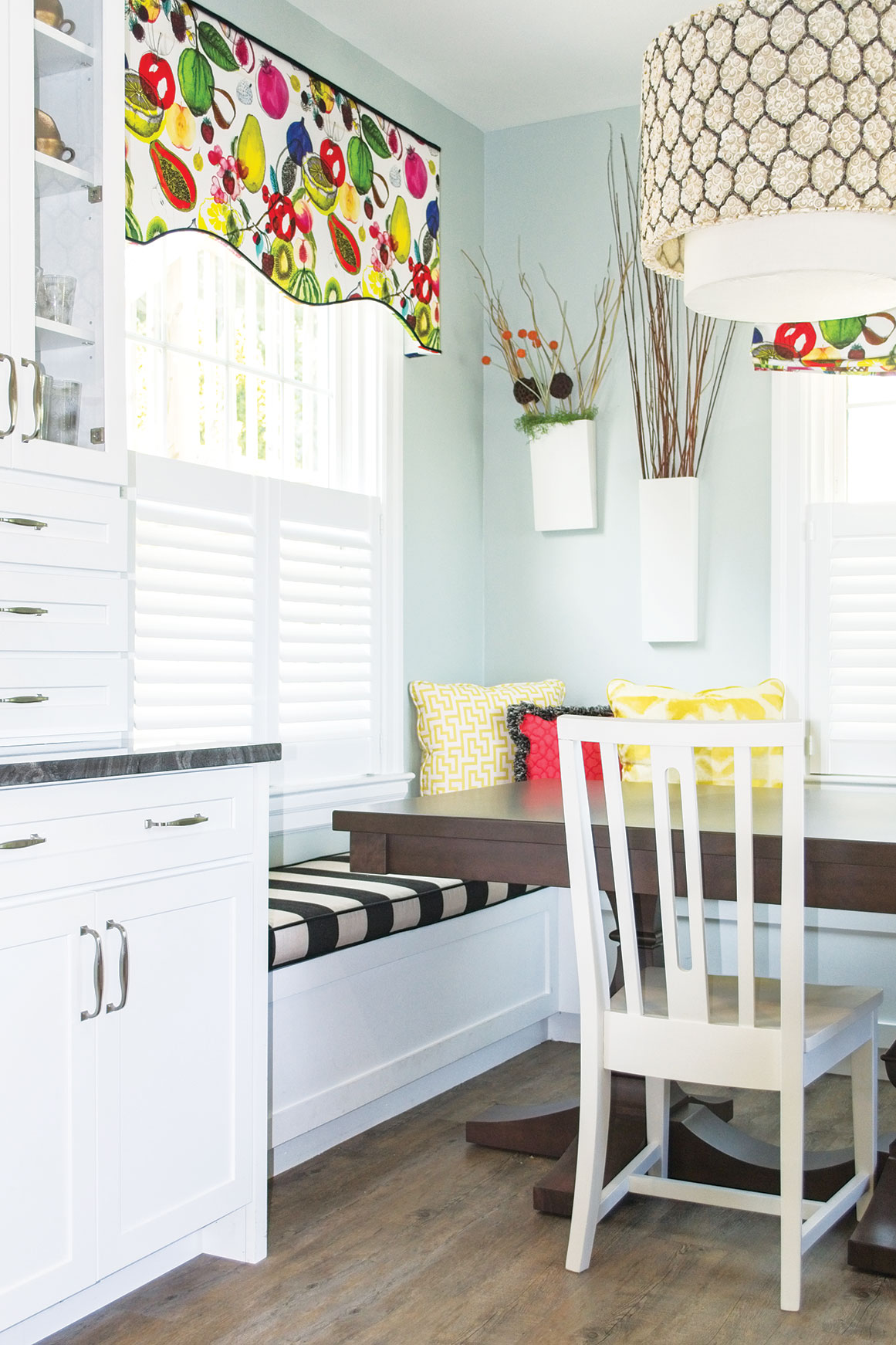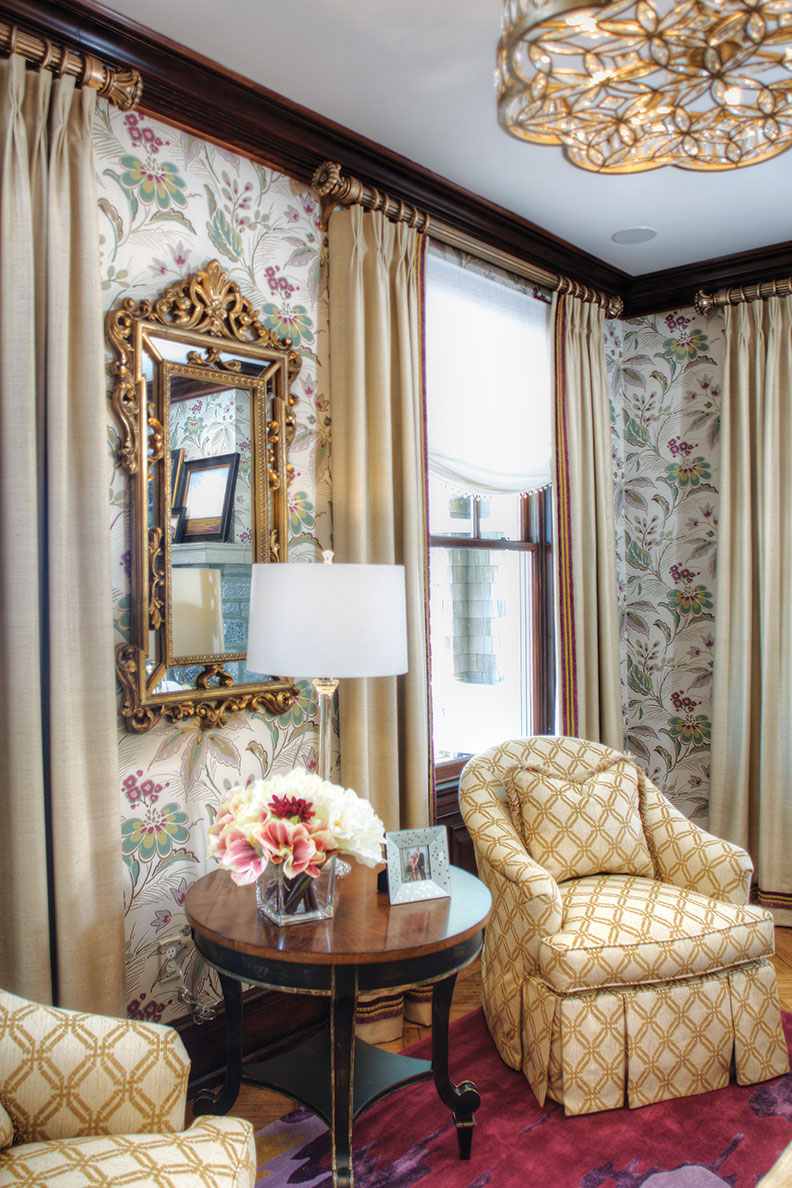Simply Divine Window Treatments

A stationary Roman valance tops off this window in an Ocean City home. The fabric is Duralee’s Wedgewood. Photo courtesy of Dompierre LLC.
Unfussy window treatments stand the test of time
 Victor Dompierre, Owner/Partner
Victor Dompierre, Owner/Partner
Dompierre LLC
17 Roosevelt Blvd.
Marmora
609-390-2223
DompierreLLC.com
The Carefree House, featured in each issue of Design NJ, explores options in attractive, long-lasting home products. Fabric window treatments take center stage in this issue.

Duralee’s Wedgewood fabric stars in these side panels in an Ocean City home; the blinds are Hunter-Douglas’ Everwood. Blue-gray mixes are popular at the shore, says Victor Dompierre, owner/partner at the full-service interior design firm and workroom Dompierre LLC in Marmora. Photo courtesy of Dompierre LLC.
Design NJ: Window treatments represent a significant portion of most interior design budgets. What will function smoothly for several years and still look timeless?
Victor Dompierre: Simple panels and Roman shades come to mind first. Roman shades can be made in three styles: flat, with the folds straight across; relaxed, with a bow at the bottom; and soft fold, which looks like a teardrop when you view it from the side. Other classics are the simple box-pleat valance and plain cornices that are straight across. Occasionally I do a curved-arch cornice that’s cut out about 3 inches.
As far as function goes, we have an on-site workroom and manufacture our window treatments with simple-to-use mechanisms, nothing complicated. We install and check the window treatments to be sure they operate perfectly. We work with designers who are shopping for clients and also work directly with homeowners.
DNJ: Among those classic window treatments, what do you recommend if homeowners want something that will block out sun and prying eyes? What if they prefer filtered light?
Dompierre: Blackout linings not only block out light but also save the window treatment because they prevent fading caused by the sun. With a light-filtering lining, the decorative fabric can still fade where it’s closest to the window—along the folds. Also, the sun shining into the fabric through a light-filtering lining can distort its appearance, washing out colors, something that doesn’t happen with a blackout lining behind the fabric.
People usually want to protect their investment in a custom window treatment with a blackout lining, but a fabricator can do a light-filtering lining on panels and shades if that’s desired. We don’t recommend sheer fabrics if privacy is a priority.

Dompierre LLC created this kitchen window treatment to provide dining privacy while maintaining a bright feel. Cornices are classic window treatments that can be shaped as this one is; it’s in Manaos-Perroquet fabric from Designers Guild. The Norman® shutters are remote-controlled. Courtesy of Dompierre LLC.
DNJ: Are all of your classic window treatment options custom? Are there off-the rack options?
Dompierre: They are 100% custom. Some off-the-rack window treatments are very nice, but they can cost the same as custom. So why not go custom instead of using three widths put together on a big window?
DNJ: What are the cleaning instructions on the window treatments you have described?
Dompierre: If you wash window treatments, they never look the same to me afterward. In areas near a kitchen, for example, where cooking vapors can drift, you might want a washable fabric anyway. But in living areas and bedrooms, I tell customers to take down the window treatments, put them in the dryer to fluff them and remove dust, and then put them back up. No one has ever complained about the results. You also can hand-vacuum them.
Depending on the fabric, many window treatments can be taken down and sent to a high-quality dry-cleaner. Just be aware that it’s very hard to find someone who does a good job when coming into your home and cleaning the window treatments while they are hanging.
DNJ: Man-made vs. natural materials: What’s superior for durability?
Dompierre: Man-made. Polyester is incredibly durable, like the Sunbrella® and Crypton® fabrics that can be used indoors and outdoors. Sunbrella doesn’t fade, and spills bead up on Crypton. Indoor-outdoor polyesters even come in velvets. Both can take the weather, and they can be spot-cleaned easily.

Simple drapery panels have timeless appeal, and these—made for a Cape May show house—were interlined to enhance the look of fullness. A blackout lining protects the Andes silk fabric from Fabricut. The lined Roman shades are in Fission fabric and trimmed with Pyrite Clear bead fringe, both products by Robert Allen. Photo by John Armich.
DNJ: Design choices affect staying power because consumers won’t keep a window treatment as long if it seems dated. Are there classic fabric colors and patterns?
Dompierre: There are so many classics! Many customers go with white and cream solids and then change out their pillows and throws to refresh their rooms. Grays also have been hanging around for quite a while. At the shore, greenish and bluish grays are popular. Blue, teals and turquoise are also big at the shore. Off the shore, earth-tone neutrals are more traditional.
In patterns, chevron, stripes, paisleys, florals and the tree-of-life pattern are classics. Many of our clients change out their window treatments every 10 to 15 years, and others do it sooner to follow the trends. It just depends on what people want.
DNJ: A pleasing scale affects staying power also. What’s your advice regarding the scale of a pattern chosen for a window treatment?
Dompierre: I am crazy about big prints on fabric, wallpaper, you name it. Some clients want to go for it and be bold. But if I recommend something small or large and the client isn’t satisfied, I do what it takes to make them happy.
DNJ: Do you have any other advice to share?
Dompierre: Homeowners need to figure out what they like. At Dompierre LLC, for example, if a customer collects pictures of what they like, that gives me a feel for their taste and needs so I can make suggestions of what will work in their own rooms.
Freelance writer Mary Vinnedge now wonders whether the trellis pattern of her bedroom drapery panels will soon be passé.
